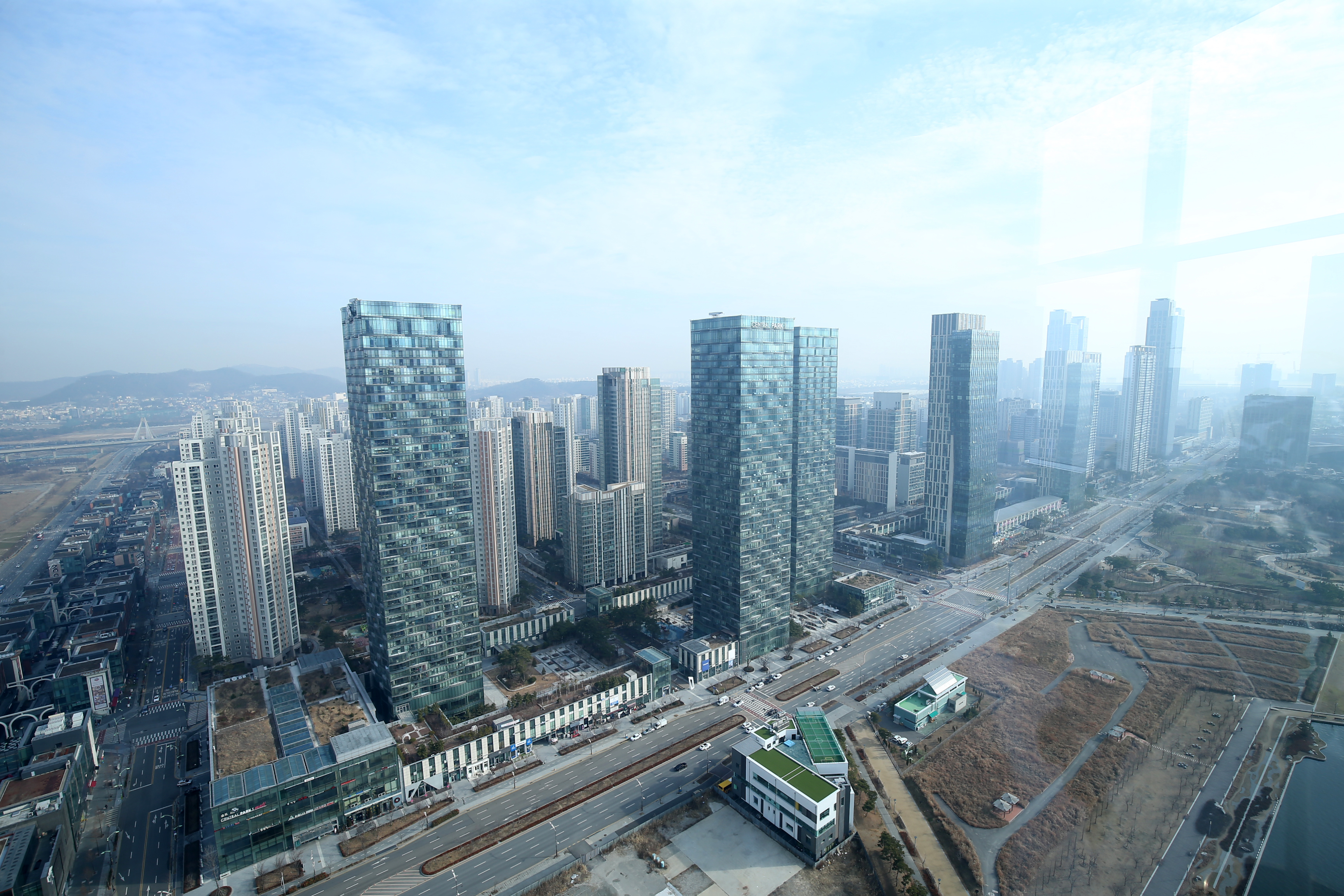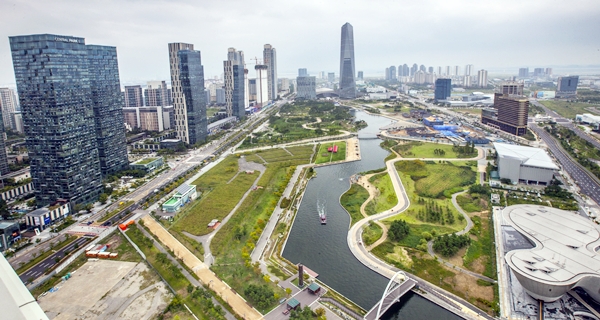
On December 19-22, 2016, Second-Year Baker students visited Seoul, South Korea to participate in the program’s inaugural intercontinental real estate trek. Having completed an exciting, revised curriculum that highlights the importance of the global economy in real estate, the trip enabled students’ knowledge to come full circle in their second year. This article highlights the third and final day of the trip, in which students visited the Songdo International Business District.
The city of Songdo is equal parts prototype and real estate development. More than anything, it is the result of the multi-century trend of the human population increasingly congregating in cities, which shows no sign of slowing down. According to the World Bank, the percentage of the world’s population living in urban areas is currently around 54%, having passed 50% in 2007 and up from 34% in 1960. In South Korea, that figure stands at 82%, up from just 28% in 1960.
With the rapid urbanization of South Korea from 1950 to the present, the country’s leaders have looked to technology and urban planning for solutions to the long-term challenges of building sustainable, healthy cities that will last for centuries to come. The Songdo project was advanced as part of former President Lee Myung-Bak’s effort to promote green and low-carbon growth as an avenue for future development. Accordingly, many city and national governments from around the world will be looking to such pioneering, large-scale projects for answers to their own future challenges.
 In the early 2000s, the South Korean government was finishing construction on Incheon International Airport, built on landfill in the Yellow Sea approximately 45 miles west of Seoul due to the lack of available land closer to the city. Knowing that this would shift the trends of development between Seoul’s center and Incheon, the government began planning a city from scratch, one that would propel forward the extent to which technology could be integrated into daily life, both in the sustainable materials that a city is constructed with and its use in citizens’ day-to-day routines.
In the early 2000s, the South Korean government was finishing construction on Incheon International Airport, built on landfill in the Yellow Sea approximately 45 miles west of Seoul due to the lack of available land closer to the city. Knowing that this would shift the trends of development between Seoul’s center and Incheon, the government began planning a city from scratch, one that would propel forward the extent to which technology could be integrated into daily life, both in the sustainable materials that a city is constructed with and its use in citizens’ day-to-day routines.
From 2001-03, the Korean government filled in a 1500-acre stretch of marshy tidal flats with 500 million tons of sand. Ever since, the new city of Songdo has gradually emerged from the ground-up, and is currently about 60-65% complete according to majority developer Gale International, which has built Songdo in partnership with Korean steelmaker POSCO and Morgan Stanley. More than 70,000 people have moved to Songdo, and its 108 buildings and more than 22 million square feet of LEED-certified space comprises more than 40% of all “green” developed space in South Korea.
Gale International and the other developers have seized the opportunity to push the envelope on technology integration. Cisco and other international technology firms have signed on to the project to apply their systems into the places of work and residence of the future. Songdo has been designed to use sensors to monitor temperature, energy use and traffic flow. Such sensors can alert one’s smartphone via an app when, for example, a bus or subway is arriving, and automatically let the transit authority know about other issues. Provisions have been made for the large-scale use of electric charging stations, and a water recycling system will clean water as well as segregate uses such that drinking water will not be used for purposes such as flushing toilets.
One other area where Songdo is bridging the gap to the future is its waste disposal system. There are no garbage bins or garbage trucks on Songdo’s streets. Instead, all waste is sucked directly from office, kitchens, and other areas through a vast network of underground tunnels to waste processing centers, where recyclables and compostables are separated efficiently. In the future, plans have been made to build systems which will be able to convert household waste into renewable energy.
View of Songdo’s Central Park and Canal

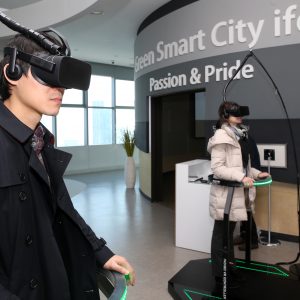 For Baker Students, the day began with a 45-minute bus ride to Songdo, and a visit to Gale International. The developer offered a comprehensive overview of the multi-decade project, highlighting both its achievements and challenges. Notably, as the city has grown rapidly, the necessity of a high-speed rail connection to Seoul has become apparent. Songdo has experienced robust growth despite the Korean government not offering tax breaks and other incentives for businesses and citizens to move there. However, despite being next to South Korea’s main international airport, transport links into Seoul are rudimentary, and the incentives for companies moving to a new smart city don’t always outweigh the costs. Currently in the planning stages, the railway is expected to open by 2024-25.
For Baker Students, the day began with a 45-minute bus ride to Songdo, and a visit to Gale International. The developer offered a comprehensive overview of the multi-decade project, highlighting both its achievements and challenges. Notably, as the city has grown rapidly, the necessity of a high-speed rail connection to Seoul has become apparent. Songdo has experienced robust growth despite the Korean government not offering tax breaks and other incentives for businesses and citizens to move there. However, despite being next to South Korea’s main international airport, transport links into Seoul are rudimentary, and the incentives for companies moving to a new smart city don’t always outweigh the costs. Currently in the planning stages, the railway is expected to open by 2024-25.
Future Area of Development in Songdo
 At the top of the tower in which Gale’s office is situated, students were able to get a bird’s eye view of Songdo. Situated a park and canal system that was inspired by New York City’s Central Park and Venice’s canal system, the balance of open space and developed land stood out, and it was apparent just why Songdo has had an easier time drawing young families and students away from Seoul than businesses. A full 40% of Songdo’s land will be developed for open space, parkland, and urban farming, one of the highest percentages of any municipality in the world. From the observation floor, students could also get a sense of the large tracts that remain to be developed. For many students, the vacant land conjured a sense of the great place Songdo will be in the future. After lunch, students were able to visit a model apartment from one of the many residential developers that are currently building or planning complexes in the city, many of which will fill those currently dormant parcels of land.
At the top of the tower in which Gale’s office is situated, students were able to get a bird’s eye view of Songdo. Situated a park and canal system that was inspired by New York City’s Central Park and Venice’s canal system, the balance of open space and developed land stood out, and it was apparent just why Songdo has had an easier time drawing young families and students away from Seoul than businesses. A full 40% of Songdo’s land will be developed for open space, parkland, and urban farming, one of the highest percentages of any municipality in the world. From the observation floor, students could also get a sense of the large tracts that remain to be developed. For many students, the vacant land conjured a sense of the great place Songdo will be in the future. After lunch, students were able to visit a model apartment from one of the many residential developers that are currently building or planning complexes in the city, many of which will fill those currently dormant parcels of land.
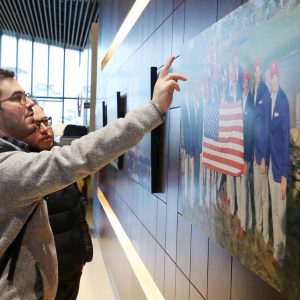
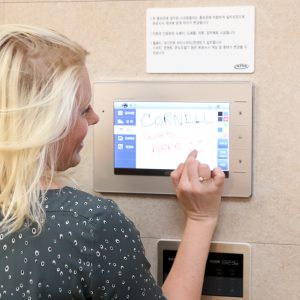 For the last stop of the day, students visited the Jack Nicklaus Golf Club. For decades, golf’s popularity has been on the rise in Korea, the opposite scenario of many other countries around the world. In recent years, Korean women have come to dominate the ranks of the LPGA, with several notable male golfers on the PGA Tour as well. Therefore, it was fitting to feature a golf course as part of Songdo’s green space program. And there was no firm more appropriate to design the course than Nicklaus Design. Since its opening in 2010, it has quickly attained the status of one of Korea’s most exclusive golf clubs. It’s rise in prominence was helped by its hosting of the eleventh President’s Cup in 2015, which was the first held in Asia.
For the last stop of the day, students visited the Jack Nicklaus Golf Club. For decades, golf’s popularity has been on the rise in Korea, the opposite scenario of many other countries around the world. In recent years, Korean women have come to dominate the ranks of the LPGA, with several notable male golfers on the PGA Tour as well. Therefore, it was fitting to feature a golf course as part of Songdo’s green space program. And there was no firm more appropriate to design the course than Nicklaus Design. Since its opening in 2010, it has quickly attained the status of one of Korea’s most exclusive golf clubs. It’s rise in prominence was helped by its hosting of the eleventh President’s Cup in 2015, which was the first held in Asia.
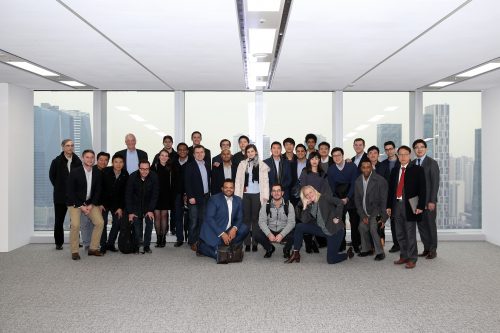 As the day drew to a close, it was apparent that Baker students had gained great perspective from the trip to South Korea. By observing and experiencing one of the world’s most advanced, most urbanized societies, they had new perspectives on all kinds of property types, from residential and office to retail and, as the trip wrapped up in Songdo, great ideas to draw from as they embark on their careers and in the future.
As the day drew to a close, it was apparent that Baker students had gained great perspective from the trip to South Korea. By observing and experiencing one of the world’s most advanced, most urbanized societies, they had new perspectives on all kinds of property types, from residential and office to retail and, as the trip wrapped up in Songdo, great ideas to draw from as they embark on their careers and in the future.
